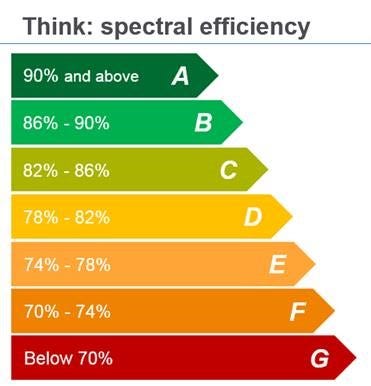Next-generation spectrum management
In contrast to the fragmented 4G deployment, the EU now aims to establish common practices for 5G spectrum allocation and management across member states. This is driven by the requirement for consistency in the regulatory framework, including frequency band harmonisation.
January 3, 2017

Telecoms.com periodically invites expert third parties to discuss the latest challenges facing the industry. In this post, Dr. Konstantinos Stavropoulos, Technical Marketing Lead at Amdocs discusses the biggest elements of a 5G spectrum strategy worth considering.
“Better use of radio frequencies: Reducing divergences between regulatory practices”, “long license durations, coupled with more stringent requirements to use spectrum effectively and efficiently”, and “timely release of spectrum […] and more converged spectrum policies.”*
These are excerpts from the 2016 State of the Union address of Jean-Claude Juncker, the President of the European Commission. President Juncker has proposed an overhaul of the European Union (EU) telecoms rules, in conjunction with the EU Digital Single Market and 5G Action Plan initiatives. Indeed, the EU sees 5G as a key enabler of user experience and economic growth, and wants every member state to launch 5G in at least one of its major cities by 2020.
In contrast to the fragmented 4G deployment, the EU now aims to establish common practices for 5G spectrum allocation and management across member states. This is driven by the requirement for consistency in the regulatory framework, including frequency band harmonisation. It is also explained by the need for a new, next-generation approach to spectrum management that is suitable to next-generation networks.
While the “more stringent requirements to use spectrum effectively and efficiently” are open to interpretation, this statement has implications for EU countries and service providers with mobile networks in the EU. At the same time, understanding how the scarce radio resources – the lifeblood of wireless networks – could be used better is not an EU-specific challenge. It is very much relevant to any country interested in 5G.
Sweating (spectrum) assets
To make the most of the available frequency bands, more efficient technologies can be deployed. For example, 5G will be more spectrally efficient than 4G (which in turn is more efficient than 3G). So, there is an inherent spectrum rationale for countries and service providers to deploy new technologies. Such a strategy should follow – and build upon – the continuous optimisation of existing radio network resources. These manual and/or automated efforts of static (offline) or dynamic (near real time) nature include spectrum re-farming.
Licensing is another crucial area to look into. Today, service providers who have purchased the license for a specific frequency band can continue to use it exclusively, provided that they: satisfy the area and/or population coverage targets stipulated in the license agreement; do not end up with an excessively large percentage of spectrum through acquisitions. Whether the licensed radio resources have been used optimally is not a regulatory obligation.
Contrary to the current licensing model, the next-generation approach to spectrum management may focus on whether radio resources are used effectively and efficiently. This is related to the “use it or share it” spectrum discussion and with trailblazing initiatives such as the Citizens Broadband Radio Service (CBRS) scheme of the Federal Communications Commission (FCC) in the US. Inevitably, such ideas would have significant commercial ramifications, for example to the price of a spectrum license.
How would this new approach work? Potentially, a government regulator would monitor the level of licensed spectrum utilisation by each service provider. In case of suboptimal performance, the regulator could ask a service provider to enhance its exclusive use of radio resources or share these resources with other providers. In fact, the static or dynamic spectrum ‘leasing’ would be in line with the 5G ‘wholesale’ narrative: 5G is expected to transform the business profile and relevance of mobile service providers, above and beyond basic connectivity provision or network sharing concepts such as the Mobile Virtual Network Operator (MVNO) model.
Alternatively, spectrum sharing may become the norm or at least co-exist with spectrum exclusivity. In these terms, more than one service provider would be granted access to a frequency band or set of frequency bands, based on an advanced spectrum sharing mechanism (perhaps similar to the tiered CBRS Spectrum Access System). With a number of providers able to access radio resources from day 1, licensed spectrum ‘waste’ would be far less likely. A similar scheme may even apply to unlicensed frequency bands, which form part of the spectrum management discussion (although any such regulated scheme would question the open, unlicensed nature of these bands).
The carrot and the stick
But how would we know if radio resources were being used efficiently? A variety of metrics would have to be considered, including land mass covered, properties/population covered, specific regional needs, actual spectrum use, etc. The deployment of 5G on high frequency bands (around and above 30GHz) may also call for metrics that accurately reflect the spatial utilisation profile of spectrum, for example the coverage of some but not all floors of a tall building.
The selected metrics would be weighted and combined into a spectrum efficiency index (of course, defining and calculating such an index is not a trivial exercise). Similar to the well-known energy efficiency index, which can unveil issues in the use of energy, this index would highlight potential issues in the use of frequency bands. The spectrum efficiency index could then be linked with incentives and/or penalties as part of a carrot-and-stick regulatory framework for service providers (and potentially EU country members).
Undoubtedly, the 5G business case and ultimate success are inextricably related to the allocation and use of spectrum. Mobile service providers will have to embrace network resource sharing as a fundamental 5G deployment strategy, in concert with efforts to use their own assets optimally. And depending on the 5G route that service providers follow, their customers could ‘reward’ or ‘punish’ them. In addition to any government/supranational regulator, the customers’ carrot and stick should not be overlooked.
Furthermore, 5G will be unable to live up to the sky-high expectations of customers and governments unless spectrum is managed optimally. For next-generation networks to change the way we live and work, in an effective and efficient manner, a different approach to managing the vital but scarce radio resources is necessary. As a next-generation network technology, 5G requires a next-generation spectrum management approach.

 Dr. Konstantinos Stavropoulos is responsible for product marketing in Amdocs Network Solutions, leading the definition and marketing of productised RAN and cross-domain network offerings. Konstantinos has been focusing on mobile networks for more than 20 years through academic and professional roles. His experience covers diverse areas, from antenna array systems research and mobile network planning/optimization consultancy to the development, management and marketing of innovative software solutions.
Dr. Konstantinos Stavropoulos is responsible for product marketing in Amdocs Network Solutions, leading the definition and marketing of productised RAN and cross-domain network offerings. Konstantinos has been focusing on mobile networks for more than 20 years through academic and professional roles. His experience covers diverse areas, from antenna array systems research and mobile network planning/optimization consultancy to the development, management and marketing of innovative software solutions.
Read more about:
DiscussionAbout the Author(s)
You May Also Like











_1.jpg?width=700&auto=webp&quality=80&disable=upscale)


.png?width=800&auto=webp&quality=80&disable=upscale)